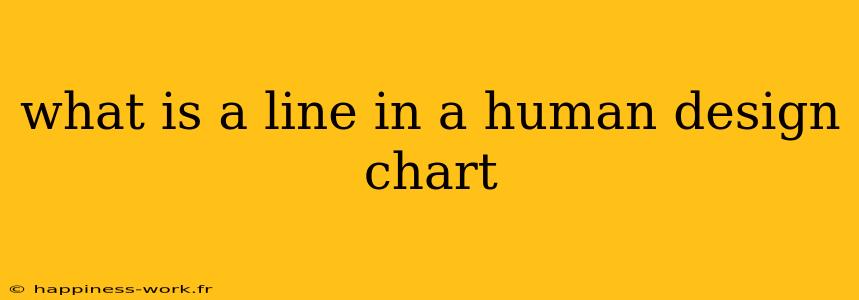Human Design is a fascinating system that combines elements of astrology, the I Ching, the Kabbalah, and the Chakra system to provide insight into an individual's personality, strengths, and life purpose. One of the critical components of a Human Design chart is the concept of "lines." This article will explore what lines are, their significance in your Human Design, and how they can affect your life.
What Are Lines in Human Design?
In Human Design, lines are derived from the Hexagrams of the I Ching and are represented by a set of six lines that correspond to various personality traits and behavioral characteristics. Each of the six lines has its own unique attributes and influences, which can provide valuable insights into how you operate in the world.
Breakdown of the Lines
-
Line 1 - The Investigator: People with this line are curious, research-driven, and thrive on learning. They are known for their need for a solid foundation, often accumulating information before making decisions.
-
Line 2 - The Hermit: This line indicates natural talent but a preference for solitude. Individuals may withdraw from social settings to recharge and reflect, ultimately needing balance between social interactions and personal space.
-
Line 3 - The Martyr: Those with this line learn through trial and error. They tend to face challenges and setbacks but grow resilient from their experiences, making them highly adaptable and resourceful.
-
Line 4 - The Opportunist: Known for their networking abilities, people with this line often thrive through relationships and community support. They are natural connectors and are often highly influential in their networks.
-
Line 5 - The Heretic: This line represents a projection of expectations. Individuals with this line can bring new ideas and solutions but may face misunderstandings due to others projecting their views onto them.
-
Line 6 - The Role Model: Line 6 individuals go through three life phases, moving from experience to wisdom. They serve as role models and guides, providing wisdom based on their life experiences.
How Do Lines Affect Your Human Design Chart?
The lines in your Human Design chart significantly shape your personality and life experiences. They can indicate how you learn, interact with others, and approach life challenges. Understanding your lines can lead to enhanced self-awareness and growth.
For example, someone with a Line 3 might embrace failures as learning opportunities and encourage others to view obstacles as stepping stones rather than setbacks. In contrast, a Line 2 person may prioritize their alone time to gather insights before sharing them with the world.
Analyzing Your Lines and Their Influence
To analyze your lines, you can look at your Human Design chart and identify the lines associated with your Profile. The Profile is composed of two lines, which further define your personality type. Understanding your complete Profile allows you to see the unique interplay of your lines and how they contribute to your overall design.
Practical Example
Let's say your Profile is 3/5. You might feel a natural inclination to experiment (Line 3) and could frequently find yourself in positions of influence where others look to you for answers (Line 5). This combination suggests that while you learn through experience, you also carry a responsibility to present ideas that others can adopt or reject. Recognizing this dynamic can help you navigate personal and professional relationships more effectively.
Conclusion
The lines in your Human Design chart are powerful tools for understanding your personality and guiding your decisions. By exploring each line's unique qualities, you can gain insights that foster personal growth and enrich your interactions with others.
Whether you are looking to enhance your personal life, relationships, or career, understanding your lines can provide valuable guidance. If you're curious about your specific design, consider visiting a certified Human Design analyst or using resources available online to explore this intriguing system further.
References
- Human Design principles derived from the I Ching and other esoteric traditions.
- Original concepts on lines by various contributors at WikiHow.
By diving deeper into your Human Design chart, you can unlock the mysteries of your personality and embark on a journey of self-discovery. Happy exploring!
